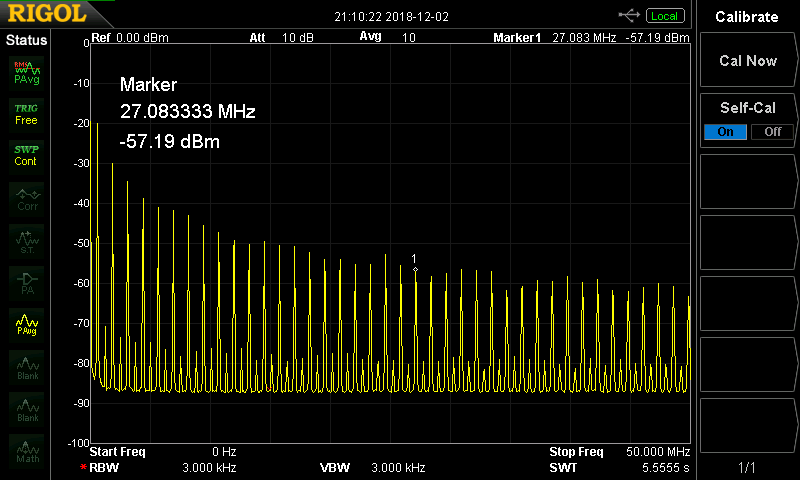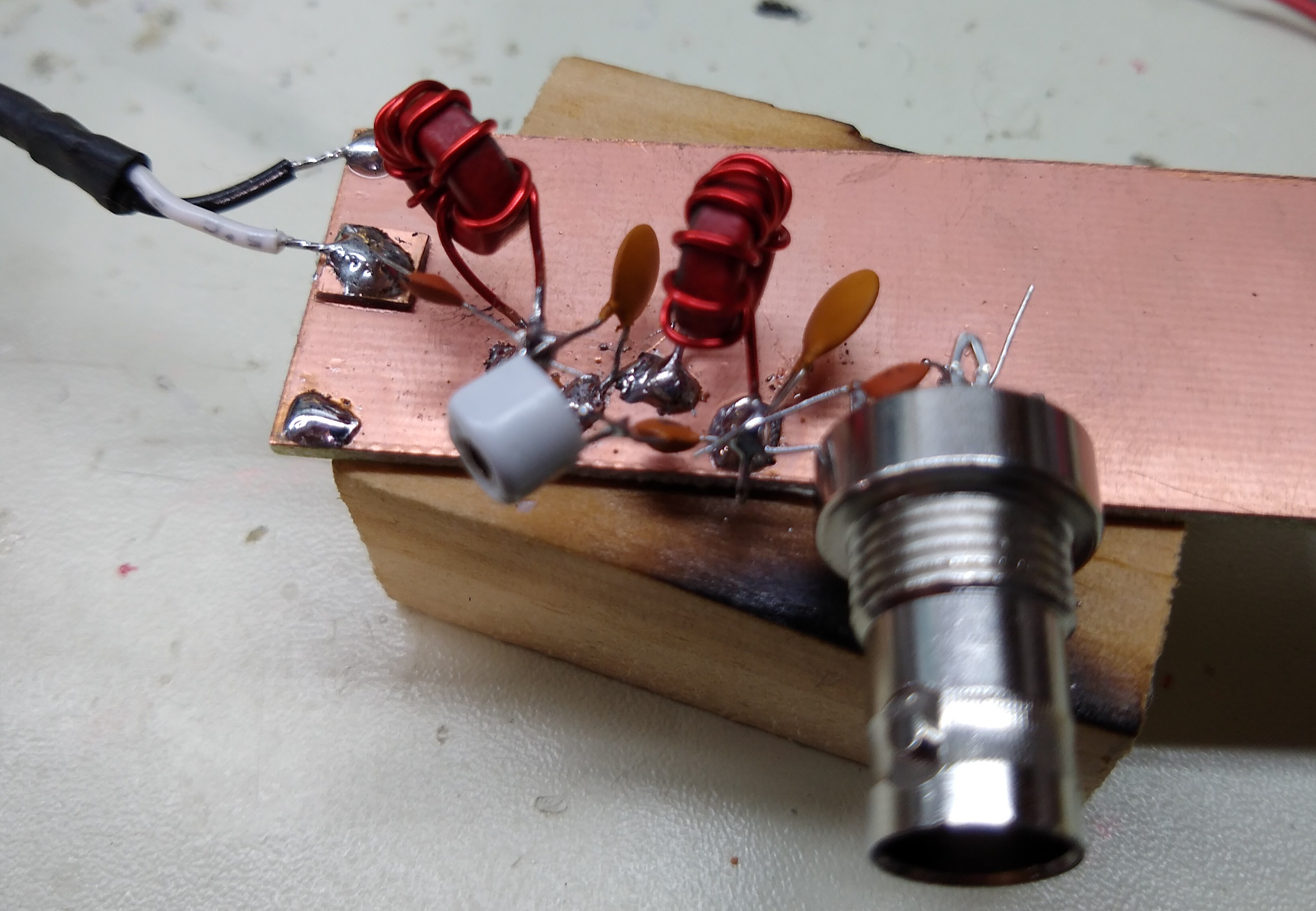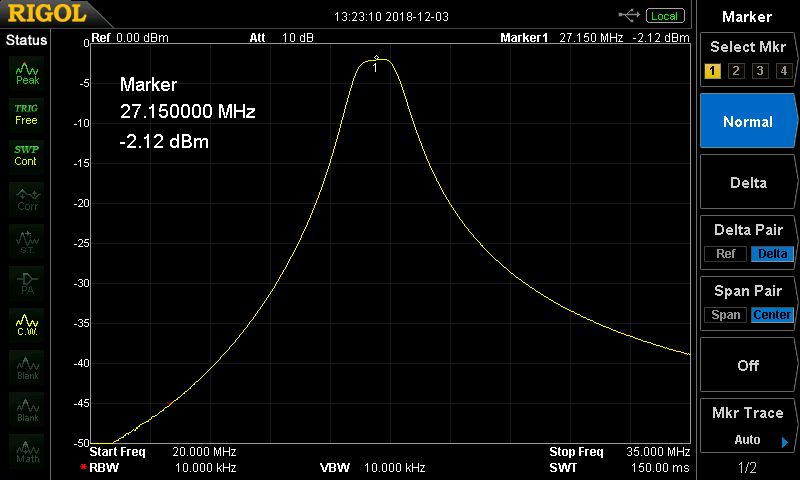I found a 27 MHz RC truck at Walmart for $10 - so now, I've blown my budget for this project. But, at least, I did get the serial port SDR to control it :-) Check out the video here:
It works because the fast edges of the waveform on the TX line create strong harmonics. In this case, I used an FT232RL adapter because the clock is more stable than other bridges, and this creates cleaner harmonics. Here's the adapter with a wire connected as an antenna:

This adapter has a 5/3.3 jumper to set the output signal level. Setting it to 5V gives an extra 3.6dB of output :-)
As shown in the video, the codes are captured as an audio file using GQRX, then modulated and transmitted on the serial port using my python code.
I set the fundamental frequency to 631kHz, because out of the limited baud rates the FT232RL is capable of, this one puts a harmonic closest to 27.145 MHz, the RC truck's transmitter frequency. You can see the harmonics on this spectrum analyzer plot:

That's the 43rd harmonic, and it's actually -47dBm, because there's a 10dB attenuator in-line to protect the analyzer. That signal is pretty weak, so the truck has to be very close to the transmitter.
It's also very possible that the truck is responding to any of the other harmonics (or multiple ones) since it is so close to the transmitter. This could be overloading the receiver, although the remote codes still are received well enough to operate the truck. It controls it from a short distance, at least, so I'm counting that as a success :-)
To figure out exactly what's happening, I'm experimenting with a bandpass filter, which you can see here:

The filter will knock out the fundamental and low harmonics, leaving just those near 27 MHz. So far, the response looks promising:

I'll amplify the filtered signal and see how well it works for controlling the truck. Plenty more details and results in the next log.
 Ted Yapo
Ted Yapo
Discussions
Become a Hackaday.io Member
Create an account to leave a comment. Already have an account? Log In.
This seriously rocks. :-D
I have a practical use for a solid-state radio, if its pretty much just a MCU, and a QFN one at that, it wont be too hard to push into a golf ball and trust it'll survive what happens next... ;-)
Plus being a MCU it can transmit an ID, state, and tracking signal, and monitor the little motion sensor I designed.
@Jan , @Simon Merrett Yes, this is Mage level magic XD
Are you sure? yes | no
For any real purpose, you're better off with a real RF transceiver chip. This is mostly just a stunt hack that would land you in hot water with the local FCC equivalent :-)
Are you sure? yes | no
You're using techniques and skills so many levels above mine, it's always a treat to watch! Thanks for sharing all that stuff!
Are you sure? yes | no
Ditto!
Are you sure? yes | no